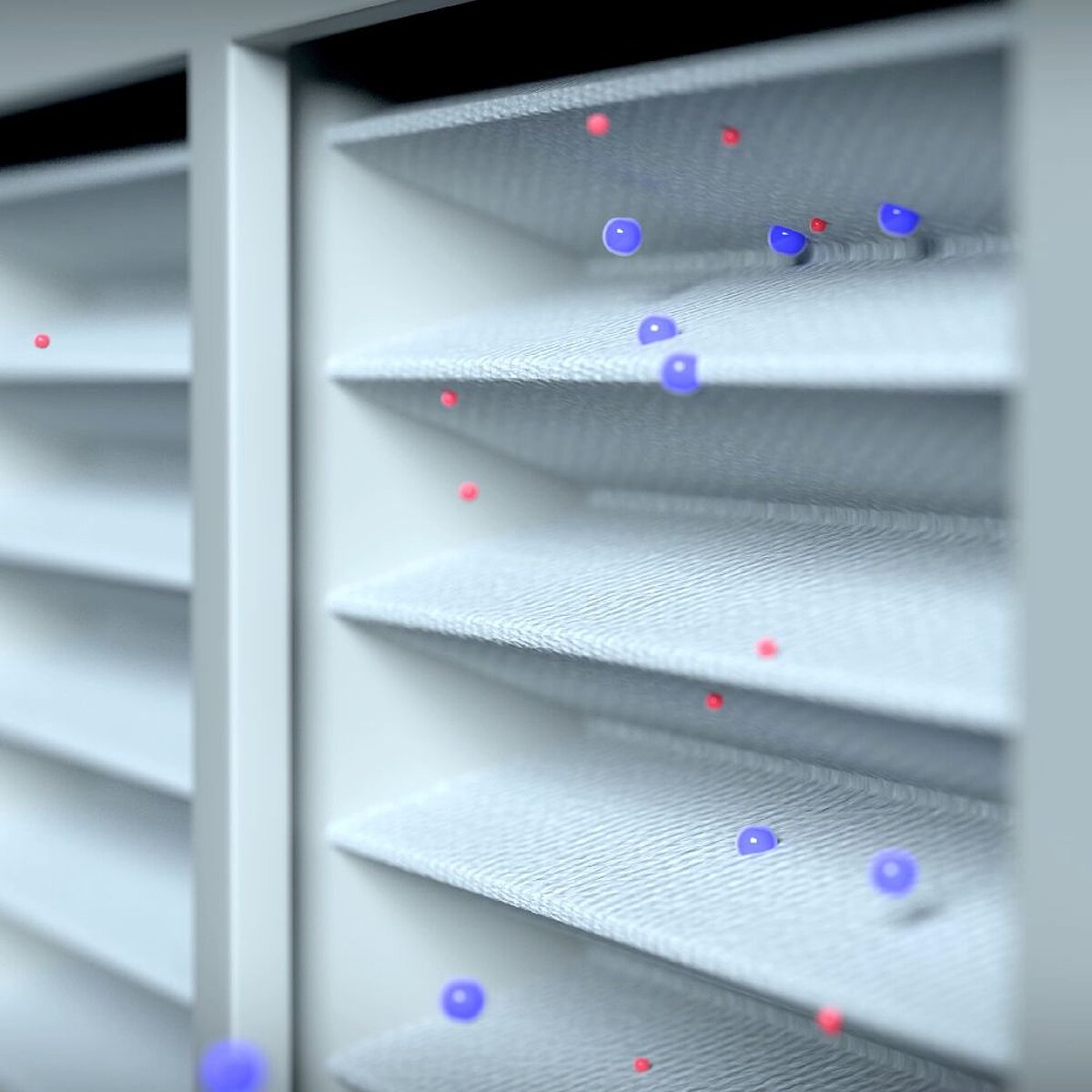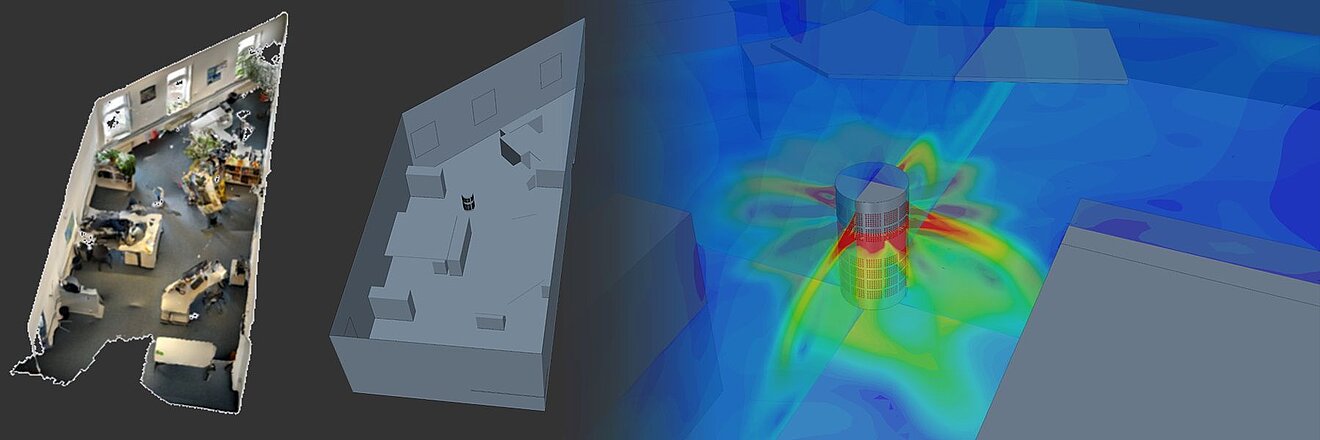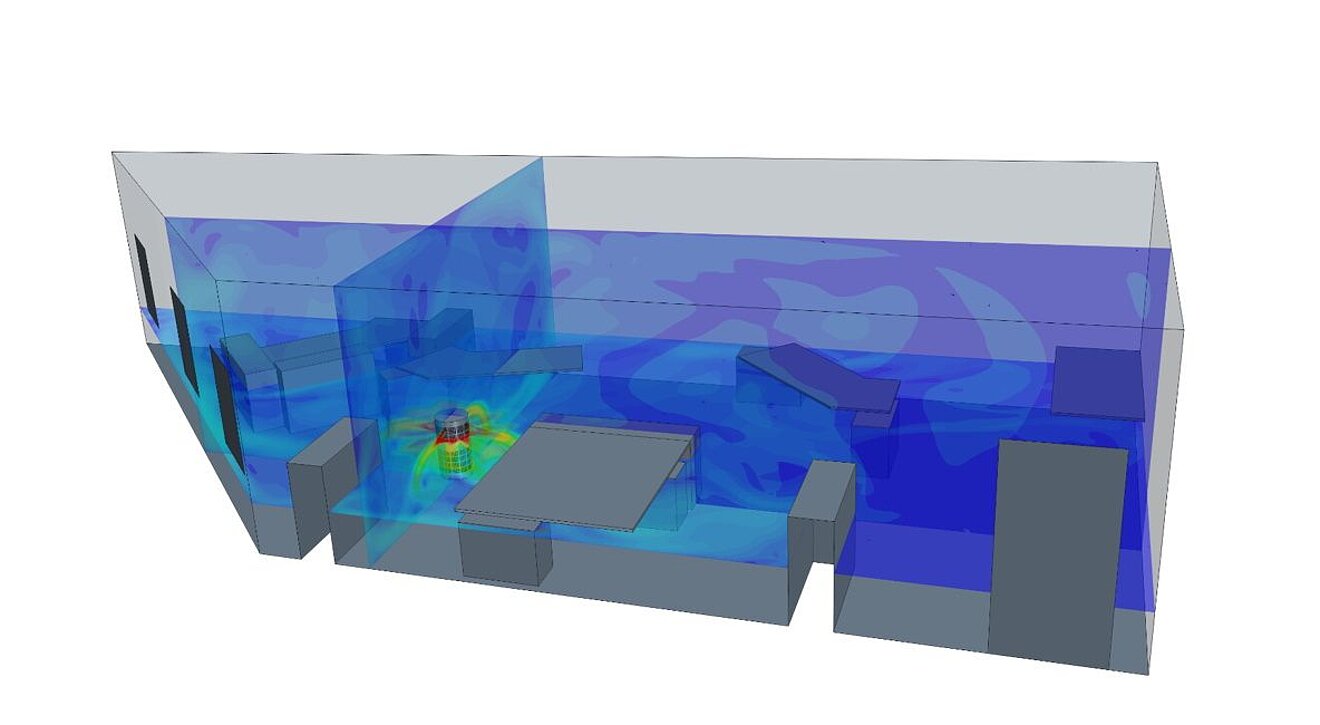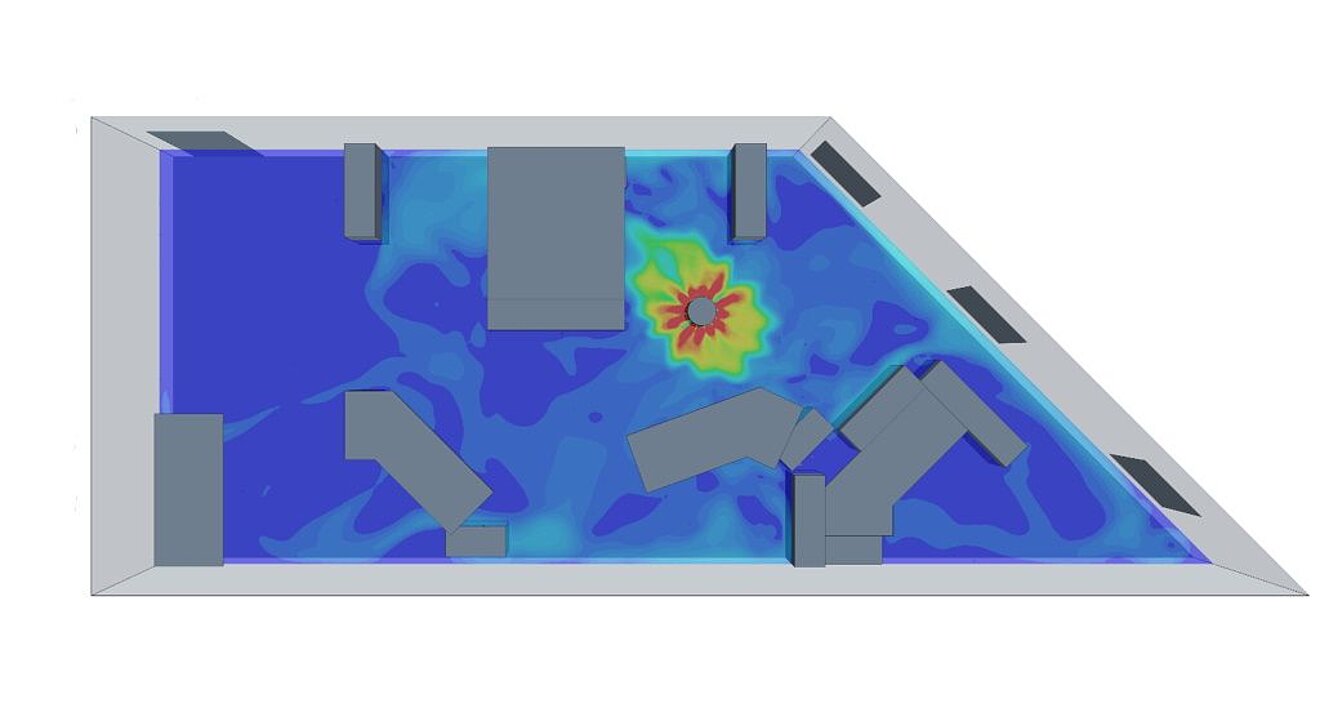And already numerous videos - mostly little scientifically empirically comprehensible experiments - of breathing or sneezing people can be found. The results of these observations often have no further value, since the physics behind them is dubious and no meaningful measures can be derived from them. Legislators cannot assess whether corona viruses are spread around the room by hand dryers or whether the effect of a door opening is greater. It is up to companies to provide evidence that their equipment - whether ventilation systems or hand dryers - is safe. Real trials, however, are costly, and evaluating the results is difficult.
Air purification

Legislators cannot assess whether corona viruses are spread around the room by hand dryers or whether the effect of a door opening is greater. It is up to companies to provide evidence that their equipment - whether ventilation systems or hand dryers - is safe. Real trials, however, are costly, and evaluating the results is difficult.
The solution: CFD simulations for air purification
Well-founded CFD simulations are ideally suited for optimizing the effectiveness of room air conditioning systems (RLT) or mobile air cleaners or for defining the optimal position in the room (as also recommended in Recknagel, Taschenbuch für Heizungs- und Klimatechnik). Not only that the behavior of the air and the particles can be precisely reproduced. In the virtual room, changed basic conditions (positioning, air inflow, exhaust air) can be simulated in real time. Potential problems become visible in advance. Product changes can be imported and tested. An enormous time and cost saving for the manufacturers.
CFD simulations in the field of air purification offer not only catchy visuals, but above all comprehensible data for a wide variety of applications:
- Air purification of particles and viruses
- Optimal positioning of mobile devices
- Air conditioning of rooms
- Dehumidification of rooms and halls
- Smoke extraction in case of fire
What you can't see, you have to believe. Merkle & Partner prefers to make things visible. Build on well-founded data. Merkle & Partner has been dealing with these issues for several decades. For our customers in the field of ventilation and air-conditioning systems and equipment manufacturers in the field of air purification, there are clear advantages:
Targeted product development
The air flow with the highest possible degree of cleaning and low noise emission can be optimized in a targeted manner even before the prototype phase.
Higher efficiency
The mode of action of devices can be demonstrated in CFD simulation. This can be optimized depending on positioning, supply air and exhaust air. An economic gain in terms of energy use and operation of the devices - a competitive advantage for the manufacturer.
Higher security
CFD proofs are accepted as final tests in many fields. This testifies to the verification power and representation of reality in well-founded CFD simulations. Thus, these engineering calculations offer a high level of safety for your products and their further development.
Since 1998 Merkle & Partner has been dealing with fluid mechanics in the fields of air conditioning, air purification and smoke extraction. Do you need proof that your equipment is safe? You do not want to miss valuable data for product development or further development?
Tell us your problem. We will be happy to contact you.
Keywords
- Aerosols
- Corona
- Smoke extraction
- Air conditioning
- Concentration
- Air purification
- Particles
- Pollutants
- Flow simulation
- Viruses


